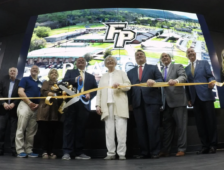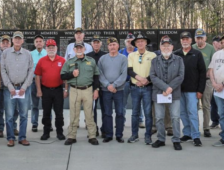By Joseph M. Morgan
joseph@southerntorch.com
FORT PAYNE, Ala.—The Alabama Forever Wild Land Trust (FWLT) held its second quarterly meeting at the Little River Canyon Center yesterday, Thursday, May 12 at 10 a.m.
The Forever Wild Program was established in 1992, by constitutional amendment, to provide for the purchase of public lands to be preserved or used for various public recreation activities including hunting, fishing, swimming, hiking and other outdoor activities. The state program is funded by a set $15 million annual budget generated from the natural gas fields located within three miles of the Alabama coastline in the Gulf of Mexico.
Since its inception, the program has purchased thousands of acres of lands for recreation, nature preserves, additions to Wildlife Management Areas, and state parks all over the state. The FWLT purchases private lands across the state of Alabama from landowners who are willingly selling their property.
FWLT then transitions the property for public use, with the acquisitions principally designated in one of four categories: nature preserves, recreation areas, state parks or wildlife management areas. Each of the four designations have varying requirements and each proposed acquisition is assessed to determine the best category under which a tract may be purchased. Land is purchased from willing landowners only.
At Thursday’s quarterly board meeting, FWLT program updates were given and the public was given the opportunity to address the FWLT Board of Directors. The board presented the latest land tract updates and discussed some of the target properties that the program would like to add to the trust.
In 2012, as the 20-year time guideline set by constitutional amendment was expiring and the FWLT faced losing funding, the organization was able to extend funding for their program for an additional 20 years in a ballot initiative that, as in 1992, received overwhelming statewide support as voters all over Alabama chose to extend the life of the program with another constitutional amendment.





